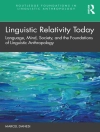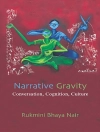The book provides an account of English inversion, a construction that displays perplexing idiosyncrasies at the level of semantics, phonology, syntax, and pragmatics. Basing his central argument on the claim that inversion is a linguistic representation of a Ground-before-Figure model, the author develops an elegant solution to a hitherto unsolved multidimensional linguistic puzzle and, in the process, supports the theoretical position that a cognitive approach best suits the multidimensionality of language itself. Engagingly written, the book will appeal to linguists of all persuasions and to any reader curious about the relationship between language and cognition.
Tabella dei contenuti
Chapter 1: Preliminaries
1. Issues of inversion
1.1. Types of inversion
1.2. Peculiarities of inversion
2. Previous research
2.1. Syntactic accounts
2.2. Functional accounts
2.3. Information packaging: Birner (1996)
2.4. Subjectivity and emotivity: Dorgeloh (1997)
3. Relevant tenets of cognitive linguistics
4. Other issues
4.1. Inversion as a construction
4.2. Data and judgment of acceptability
Chapter 2: Inversion as Gb F instantiation
1. The Gb F model
2. LOC BE: The prototype
2.1. LOC BE as the prototype
2.2. LOC BE as instantiation of Gb F
2.3. Variations of LOC BE
3. PATH Vm: From existence to motion
3.1. PATH Vm: The central type
3.2. TEMP Vm: From space to time
4. NSPAT BE: From spatiality to nonspatiality
5. A radial classification
6. The phonology of inversion: A matter of focus
6.1. Stress
6.2. Intonation
7. Gb F and information packaging: A comparison
Chapter 3: Syntactic constraints
1. Polarity
2. Transitivity
3. Embeddedness
3.1. Previous research
3.2. Embeddability
3.3. Embedded inversion
4. Auxiliaries
5. Weight
6. Summary
Chapter 4: Inversion in discourse
1. Discourse types: A tripartite
2. Inversion in description
2.1. General discussion
2.2. Ground-chaining
2.3. Center-linking
2.4. Multiple-anchoring
2.5. Other approaches
3. Inversion in narration
4. Inversion in exposition
5. Summary
6. Inversion in parody
Chapter 5: Conclusion
1. Summary
2. Gb F representation in other languages
Circa l’autore
Rong Chen is Professor at California State University, San Bernardino, USA.












